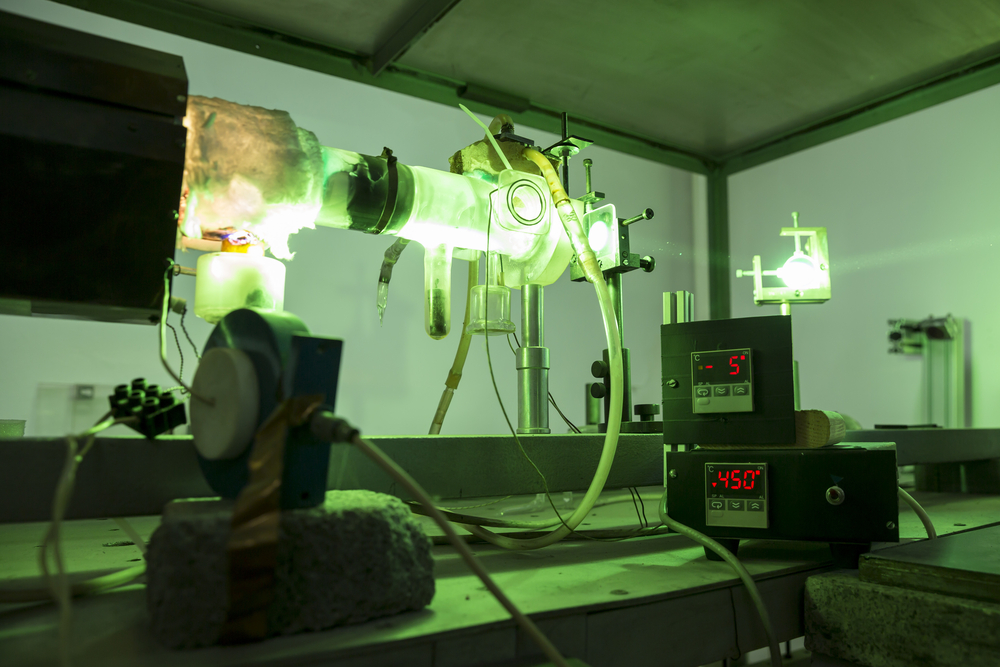
By Brian Santo, contributing writer
A vacuum might not be empty at all; it might only seem empty on balance . That balance would be between electrons and their anti-matter counterparts, positrons. According to theory, any vacuum is filled with such electron-positron pairs. These pairs would be undetectable because they wouldn’t interact with anything — with the possible exception of the beam from a 100-petawatt laser. Which is one of the reasons why Chinese researchers are about to begin building a 100-PW laser.
These researchers propose to pulse an incredibly powerful beam for a few trillionths of a second through a vacuum with the expectation that it will induce electron-positron pairs to break apart. Positrons are ephemeral, but the electrons would remain. It would look like producing something out of nothing. The proposed process is being described as “breaking the vacuum.”
The formula E=MC2 suggested two things. One is that mass can be turned into extraordinary amounts of energy. Scientists followed that lead in a number of directions, including the development of the atomic energy. The formula also suggests that it’s possible to translate energy into mass, though doing so is considered significantly harder. Breaking the vacuum would be a rare instance of it.
The Shanghai Institute of Optics and Fine Mechanics in China currently holds the record for the most powerful laser. In 2016, the Shanghai Superintense Ultrafast Laser Facility (SULF) achieved a burst of 5.3 PW. The institute is currently preparing to nearly double its record by using SULF to emit a 10-PW pulse by the end of this year.
It is also planning to build a 100-PW laser called the Station of Extreme Light (SEL), which could come online as early as 2023. Photon energy from the device could reach 15 keV.
European researchers were thinking about building a 200-PW laser but have held off even planning such a beast until they turn on a 1-PW laser in Prague this year and then build two more facilities that would take intermediate steps toward 100 PW or more, reported Science.
Russia is building the infrastructure to support a proposed 180-PW laser called the Exawatt Center for Extreme Light Studies (XCELS). Japanese researchers, who held the record with a 2-PW pulse before the Chinese eclipsed them, have proposals for a 30-PW device, according to Science.
Breaking the vacuum would be spectacular, but high-energy lasers could be useful in other applications as well. They have been used for particle acceleration, inertial confinement fusion, radiation therapy, and for secondary-source generation of X-rays, electrons, protons, neutrons, and ions, according to physicists at Cambridge University. A paper that they wrote in 2015 explains the different types of high-energy lasers. China’s SEL would be an OPCPA laser.
Advertisement





